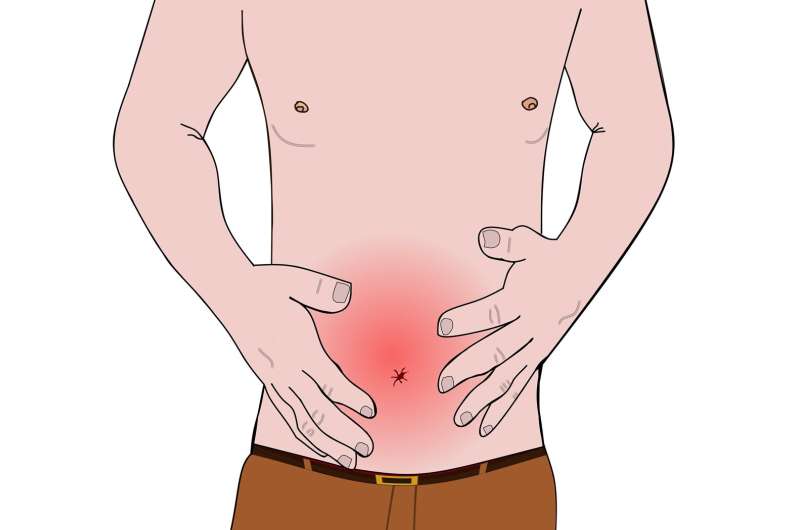Stimulating the ear's pressure points could help treat chronic abdominal pain in children and adolescents

A type of acupressure focused on pressure points in the ear could be a promising treatment for functional abdominal pain disorder (FAPD), a challenging group of disorders that cause chronic abdominal pain in 13.5% of children and adolescents.
That's the finding from a pilot study published last month in the Journal of Pediatric Gastroenterology and Nutrition. First author is Rachel E. Borlack, clinical assistant professor of pediatrics in the Jacobs School of Medicine and Biomedical Sciences at the University at Buffalo and a physician with UBMD Pediatrics.
Borlack conducted the study through the Columbia University Irving Medical Center in her previous appointment as a gastroenterology fellow at Columbia University's College of Physicians and Surgeons.
"FAPD is a group of disorders caused by dysfunction of the brain gut axis, including neurotransmitters, hormonal signaling and the microbiome, which leads to chronic abdominal pain," said Borlack. There is no laboratory test for FAPD, so it is diagnosed clinically.
Borlack explained that since no single treatment for FAPD is uniformly effective, patients with this diagnosis may be prescribed a range of pharmacologic agents or non-pharmacologic treatments, ranging from antidepressants and probiotics to dietary adjustments and cognitive behavioral therapy.
Patients and families, therefore, often seek nontraditional, adjunct therapies, including those involving acupressure. Borlack noted that recent research has indicated that symptoms significantly improved in the short term in children with FAPD when a neurostimulation device was inserted into the ear.
The current study is the first to assess in children with FAPD auriculotherapy, an acupressure treatment involving stimulation of specific pressure points in the ear that correlate with specific symptoms and disorders throughout the body.
This type of acupressure is based on the principle that people with certain disorders will exhibit different electrodermal activity—the variation in electrical conductivity in the skin after stimulation—at certain pressure points. Higher current indicates lower resistance and therefore a more active acupressure point.
In the pilot study, Borlack and colleagues compared auricular acupoint activity in 22 participants with FAPD with that of 24 healthy controls; in each group the average age was 15 years.
Borlack and her colleagues found that some of the auricular acupoints used in treating generalized pain and gastrointestinal symptoms are not active in FAPD, indicating that it is important to use disease-specific acupressure points.
"Our objectives with this study were to determine the level of auricular acupoint activity in FAPD and also to assess how participants felt about this kind of therapy," said Borlack.
More than 85% of the FAPD patients in the study reported interest in using self-administered acupressure to manage their symptoms, and more than 40% said they would definitely be interested in traveling to a clinic just for auriculotherapy.
"Our study shows that patients and families are not only interested in acupressure as a treatment option, but they are willing to travel to a clinic solely for this treatment," said Borlack. "In addition, we have proposed a protocol for treating FAPD with acupressure of the ear; however, additional data from larger studies is needed to evaluate the efficacy of this protocol to improve symptoms."
The research also demonstrates various techniques that can be used by other investigators interested in conducting rigorous research into the field of acupressure.
More information: Rachel E. Borlack et al, Electrodermal Activity of Auricular Acupoints in Pediatric Patients with Functional Abdominal Pain Disorders, Journal of Pediatric Gastroenterology & Nutrition (2021). DOI: 10.1097/MPG.0000000000003137



















